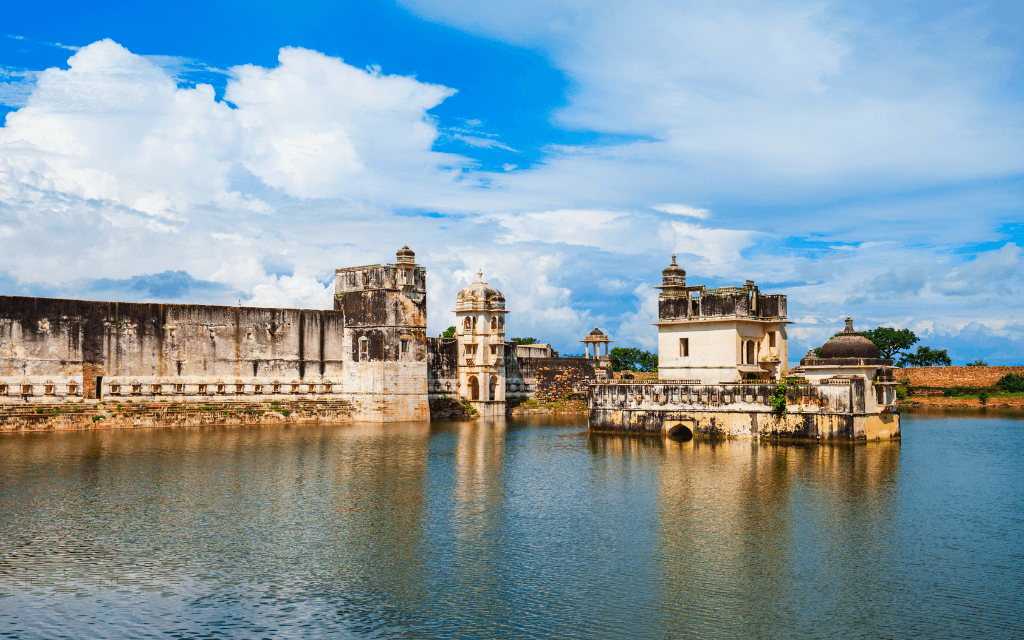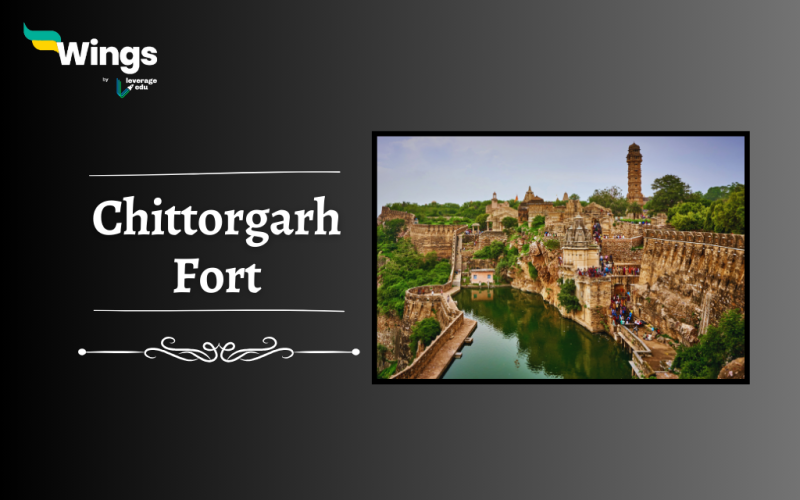Chittorgarh Fort history is traced back to the 7th century. A remarkable architectural wonder that is nestled in the heart of Rajasthan, India. Down the lane of history, this magnificent fort has been witness to countless tales of valour, romance, and resilience over the centuries. Let us together embark on a fascinating journey as we delve into the Chittorgarh Fort’s history, explore its remarkable features, and learn some intriguing facts that make it a true gem of the desert.
Contents
History of Chittorgarh Fort
The fort traces its roots back to the 7th century AD when it was built by the Maurya dynasty ruler, Chitrangada Maurya. Over the centuries, Chittorgarh Fort belonged to various Rajput clans, including the Sisodias, Guhilots, and Bhattis, who contributed to its expansion and glory. Let’s explore its rich history in detail:
- The foundation of Chittorgarh Fort is attributed to the Maurya dynasty, with subsequent additions made by the Paramara rulers. It rose to prominence under the reign of the Sisodia Rajputs, who made it the capital of Mewar.
- Legends shroud its origins, but the fort’s significance as a symbol of Rajput power was solidified under Bappa Rawal of the Guhila Dynasty. He captured the fort after defeating Moris.
- Another tale that surprises is that Bappa Rawal defeated the Arabs in a battle and took control of the fort.
- While another tale concludes that the fort was presented as a dowry to Bappa Rawal by Moris when Rawal got married to the princess of their kingdom.

- Chittorgarh Fort witnessed several sieges and attacks over the centuries, yet it stood tall as a symbol of resilience and bravery.
- The most renowned siege of the fort occurred in 1303 when Alauddin Khilji, the Sultan of Delhi, attacked Chittorgarh.
- The siege lasted for eight months, and while the Rajput defenders fought valiantly, the fort eventually fell to the invaders.
- The women of Chittorgarh, led by Queen Padmini, chose to perform “jauhar” (mass self-immolation) to protect their honour and avoid capture by the enemy.
- This act of sacrifice became a recurring motif in the fort’s history, showcasing the bravery and commitment of the Rajput women in not bowing down in front of the invaders.
- The valour of noblewomen like Padmini and Meerabai, who chose self-immolation over surrendering to the enemy, reflects the bravery and spirit of the Rajputs.
- After the death of Alauddin Khilji, the fort was passed on to his son Khizr Khan.
- But the son also surrendered to Sonigra’s chief Maldeva after ruling for seven years.
- It is also claimed that Hammir Singh of the Mewar Dynasty also captured the fort for a while, and under Rana Kumbha, the fort saw the height of its glory.
- No discussion on Chittorgarh Fort is complete without mentioning Maharana Pratap, the epitome of Rajput valour and pride. His legendary resistance against the Mughal Emperor Akbar during the Haldighati Battle in 1567 is etched in history. Despite losing the battle, Maharana Pratap’s spirit echoed through the ramparts of Chittorgarh.
- Chittorgarh Fort faced several invasions by the Mughals, including the infamous sack by Emperor Akbar in 1568. The fort, however, continued to defy their dominance.
- With the decline of Rajput power, Chittorgarh Fort lost its political significance in the 19th century. Over the years, the fort has witnessed numerous battles, sieges, and the relentless march of time.
| Commissioned by | Chitrangada Maurya of Maurya Dynasty |
| Location | Chittorgarh, Rajasthan |
| Timings | 9:30 am to 5 pm; open everyday |
| Entry Fee for fort | ₹ 20 for Indians; ₹ 100 for foreigners |
| Status | UNESCO World Heritage Site |
Also Read – Peasant Movements in India: Evolution, Causes, Phases, and Impact
Features of Chittorgarh Fort
Now that we have delved into the intriguing history of Chittorgarh Fort, let’s turn our attention to its inspiring features about Chittorgarh fort.
- Monumental Architecture: Spanning over 700 acres, Chittorgarh Fort showcases a blend of Rajput and Mughal architectural styles. It boasts magnificent palaces, intricately carved temples, majestic gates, and towering watchtowers.
- Vijay Stambh (Victory Tower): This iconic tower, standing tall at 37 meters, was built by Maharana Kumbha to commemorate his victory over Mahmud Khilji.
- Kirti Stambh (Tower of Fame): The Kirti Stambh (Tower of Fame) is dedicated to the first Jain Tirthankara Adinath. It is a 22-meter-high tower.
- Padmini Palace: Nestled amidst a serene water body, Padmini Palace is believed to be the palace where Padmini, the queen known for her unmatched beauty, resided. Its reflection in the water creates a mesmerising sight.
- Kalika Mata Temple: Dating back to the 8th century, this revered temple is dedicated to Goddess Kali.
- Tower of Kumbha: The largest tower inside the fort, the Tower of Kumbha, is a colossal structure known for its defensive capabilities. Rising to a height of 37 meters, it served as a lookout point and a strategic defence tower.
10 Interesting Facts About Chittorgarh Fort
- The Chittorgarh Fort is one of the largest forts in India.
- The fort has witnessed the reign of several notable rulers, including Rana Kumbha, Rana Sanga, and Maharana Pratap, who are revered for their contributions to Rajput history.
- Phool Mahal (Palace of Flowers), adorned with beautiful frescoes and semi-precious stones, was a favoured gathering spot for the royal court during its glory days.
- The Jauhar Kund, a large tank within the fort, is a haunting reminder of the sacrifices made by the Rajput women during times of war.
- Every year, a mela named Jauhar Mela is organised at the fort to commemorate the Queen’s sacrifice.
- Chittorgarh is known for three tragic yet heroic jauhars, where Rajput women and children chose death over dishonor after military defeat.
- Meerabai’s story is also attached to the fort.
- The fort is protected by seven monumental gates, including Padan Pol, Bhairon Pol, and Hanuman Pol, each built for defense.
- Chittorgarh Fort was declared a UNESCO World Heritage Site in 2013.
- Chittorgarh Fort is part of the Hill Forts of Rajasthan, which were inscribed as a UNESCO World Heritage Site in 2013.
Timings of Chittorgarh Fort
The Archaeological Survey of India (ASI) took the initiative of illuminating the fort after sunset with lights. Another attraction is the accredited best light and sound show at the fort. The timings for visiting the Monument and watching the mesmerising light and sound shows are –
| Purpose | Timings |
| Entry | 9 am to 5:00 pm |
| Week Entry | Everyday |
| Light and Sound Show | 6:00 pm to 7:00 pm; every day (changes applicable) |
| Duration of the Show | 45 minutes |
Chittorgarh Fort transports us to India’s past and the indomitable spirit that resides within its walls. It has stood the test of time and showcases the valour, resilience and cultural heritage of the Rajput community. The film Padmavati was based on the backdrop of the story of Queen Padmini of Chittor.
Also Read – Essay on Rani Lakshmi Bai
Other Attractions near Chittorgarh Fort
| Hainsrogarh Wildlife Sanctuary | Menal |
| Sanwaryaji Temple | Udaipur |
| Nathdwara Temple | Haldighati (Yellow Mountain) |
FAQs
Chittorgarh Fort is located in the city of Chittorgarh, in the Indian state of Rajasthan.
The fort is believed to have been originally built by the Maurya dynasty in the 7th century and later ruled and expanded by the Mewar rulers of the Sisodia clan.
Chittorgarh Fort witnessed three major jauhars by Rajput women and children to avoid capture by invaders after the defeat of their armies. These acts are seen as symbols of honor and resistance.
Rani Padmini, also known as Padmavati, was the legendary queen of Chittor. Her beauty allegedly inspired Alauddin Khilji’s siege in 1303. She is believed to have committed jauhar to protect her honor.
Yes, Chittorgarh Fort is part of the “Hill Forts of Rajasthan,” which were collectively declared a UNESCO World Heritage Site in 2013.
Relevant Blogs
| History of Fatehpur Sikri | Amer Fort History |
| Kumbhalgarh Fort History | Essay on Nelson Mandela |
| Essay on Bhagat Singh | Red Fort History |
That’s all about Chittorgarh Fort history! If you want to know more about topics like this, then visit our general knowledge page! Alternatively, you can also read our blog on general knowledge for competitive exams!
 One app for all your study abroad needs
One app for all your study abroad needs














